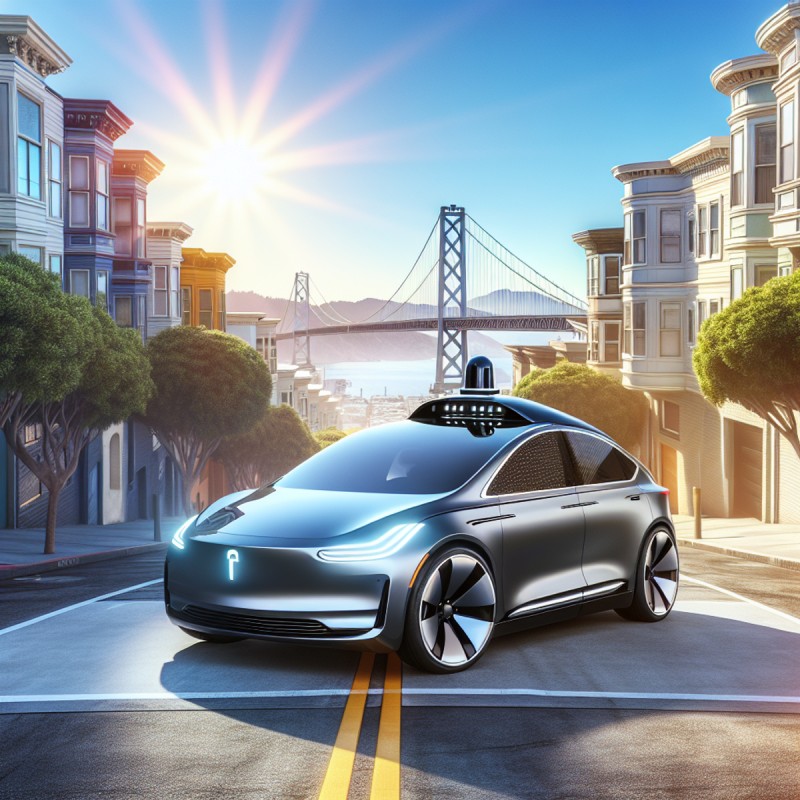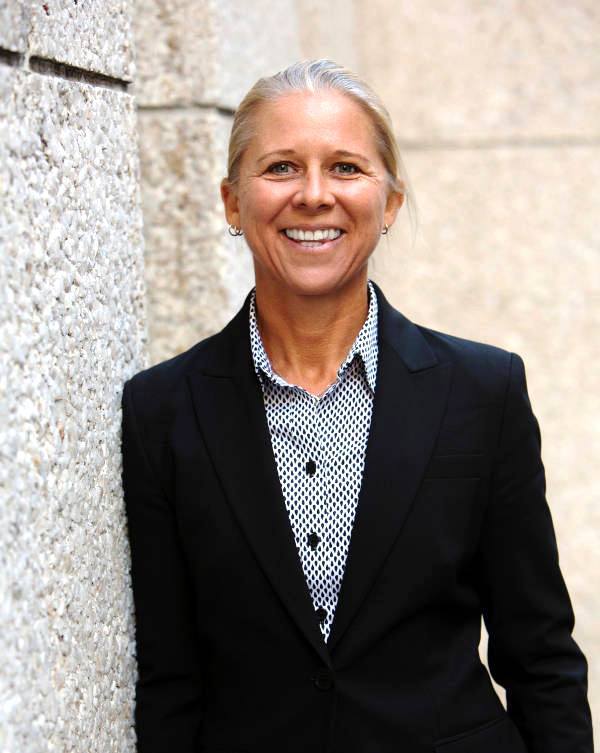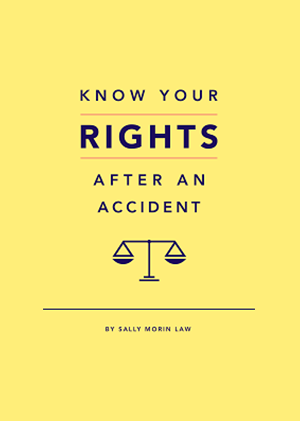San Francisco Waymo Accident Lawyer: 7 Common Myths Debunked
Waymo’s self-driving vehicles are making waves in San Francisco, bringing us closer to a future of autonomous transportation. But with these cutting-edge machines come certain challenges. When accidents involving Waymo vehicles happen, it’s uncharted legal territory for the victims. That’s why having the right expertise is crucial.
Introducing Sally Morin Personal Injury Lawyers – your trusted partner in dealing with the aftermath of a Waymo accident in San Francisco. With their extensive experience in handling complex cases involving advanced technology, they are the top choice for legal representation.
Debunking Common Myths About Waymo Accidents
As we embrace this new era of transportation, there are many misconceptions floating around about Waymo accidents and what they mean from a legal standpoint. It’s important to separate fact from fiction so that you can be prepared and informed in case you ever find yourself in such a situation.
In this article, we’ll debunk seven prevalent myths surrounding Waymo accidents, giving you the knowledge and confidence to navigate these circumstances:
- Myth: Waymo vehicles are completely safe and never cause accidents. Fact: While self-driving technology has the potential to greatly reduce accidents, it is not infallible. Waymo vehicles have been involved in collisions due to various factors such as human error or technical malfunctions.
- Myth: If I get into an accident with a Waymo vehicle, I can sue the “driver.” Fact: Since self-driving cars operate autonomously, determining liability can be complex. Depending on the circumstances, responsibility may lie with the vehicle manufacturer, the software developer, or even another driver involved in the accident.
- Myth: Insurance companies don’t cover accidents caused by self-driving cars. Fact: Just like any other motor vehicle accident, insurance coverage applies to collisions involving self-driving cars as well. The specific details may vary depending on the insurance policy and circumstances of the accident.
- Myth: Waymo is always at fault in accidents involving their vehicles. Fact: Assigning blame in a self-driving car accident requires a thorough investigation to determine the contributing factors. Fault may not solely rest with Waymo but could be shared among multiple parties.
- Myth: Pursuing legal action after a Waymo accident is pointless because they have powerful lawyers. Fact: While it’s true that companies like Waymo have resources to defend themselves, seeking legal representation is still essential. A skilled personal injury lawyer can level the playing field and fight for your rights.
- Myth: Only occupants of other vehicles can claim compensation for injuries in a Waymo accident. Fact: If you were a pedestrian, cyclist, or passenger in a rideshare vehicle involved in a collision with a Waymo car, you may also be eligible for compensation for your injuries.
- Myth: It’s impossible to recover damages in a hit-and-run involving a self-driving car. Fact: Even if the responsible party flees the scene, there are still avenues to pursue compensation. Identifying the owner of the self-driving car and holding them accountable is crucial in such cases.
Remember, knowledge is power when it comes to protecting your rights after a Waymo accident. By understanding the truth behind these common myths, you’ll be better equipped to handle any legal challenges that may arise.
Seeking Expert Guidance for Waymo Accidents
If you or someone you know
Myth 1: AVs are better at avoiding collisions than humans
One of the most common beliefs about autonomous vehicles (AVs) like Waymo is that they are much safer than human drivers when it comes to preventing accidents. This belief stems from the idea that AVs, equipped with advanced sensors and computer programs, can quickly and accurately identify potential dangers on the road and take evasive action.
While it is true that AVs have certain advantages over humans in terms of processing speed and information gathering, it is important to understand that they are not perfect. Like any other technology, AVs have their limitations and can still encounter difficulties in certain situations.
The Reality of AV Limitations
Here are some key points to consider:
- Dependence on programming and technology: The performance of AVs heavily relies on their underlying software and hardware systems. If there are flaws or bugs in the programming, it can affect how well the vehicle responds to different scenarios.
- External factors: AVs operate within the same environment as human drivers, which means they are also susceptible to external factors such as weather conditions and road infrastructure issues. These factors can impact the vehicle’s ability to navigate safely.
- Complexity of real-world driving: While AVs excel in structured and predictable environments, they may struggle when faced with complex or ambiguous traffic situations. Human drivers often rely on intuition and non-verbal communication to navigate these scenarios, something that AVs are still working on replicating.
Understanding Through an Example
To illustrate this point further, let’s examine an incident involving a Waymo vehicle in Arizona in 2020. In this case, the self-driving minivan encountered difficulty when confronted with traffic cones set up in a construction zone. Instead of smoothly merging into another lane like a human driver might do, the Waymo vehicle unexpectedly came to a stop in the middle of the road, leading to a rear-end collision.
This incident highlights how AVs can sometimes struggle to correctly interpret or respond to complex traffic conditions. Despite their advanced technology, they still have room for improvement in understanding and adapting to real-world driving scenarios.
The Importance of Realistic Expectations
While AVs have undoubtedly made significant advancements in terms of safety features and collision avoidance systems, it is crucial not to place unrealistic expectations on them or consider them as flawless solutions for road safety. It’s essential to acknowledge that AV technology is still evolving and has its limitations.
If you have been involved in an accident with a Waymo vehicle, seeking legal guidance from professionals who are knowledgeable about both traffic laws and this emerging technology is crucial. They can provide you with the necessary support and expertise to navigate through the legal process. For example, if you’re wondering about who is at fault in a brake check accident, contacting Sally Morin Personal Injury Lawyers at 877-380-8852 would be a wise move.
Additionally, knowing what not to say to an insurance adjuster after an accident can significantly impact your case. Therefore, it is advisable to consult with professionals who can guide you on the best course of action when dealing with insurance companies.
As we continue to witness advancements in autonomous vehicle technology, staying informed about their strengths and
Myth 2: AVs will completely eliminate car crashes and save lives
It’s a common misconception that autonomous vehicles (AVs) have the potential to completely eradicate car accidents. This utopian view is based on the belief that self-driving technology can outperform humans in identifying and responding to risks on the road.
The truth is, while AVs like Waymo’s are designed with sophisticated sensors and advanced algorithms that can detect and react to obstacles, they are not perfect. In fact, no technology can completely eliminate the risk of car crashes. To understand why, let’s delve a little deeper into the complexities of road safety.
The Limitations of Autonomous Vehicles
Even though AVs are programmed to follow traffic rules meticulously, they must share the roads with human drivers, pedestrians, cyclists who may not always behave predictably or legally. For example, an intoxicated driver may swerve into an AV’s lane or a pedestrian may jaywalk suddenly in front of a self-driving vehicle. In such scenarios, an accident could occur despite the AV’s best efforts to avoid it.
External Factors Influencing Road Safety
Moreover, external factors such as weather conditions and road infrastructure also play a significant role in road safety. Poor visibility due to fog or heavy rain can affect an AV’s sensors just as it impairs human vision. Similarly, potholes or malfunctioning traffic signals can lead to accidents that even the most advanced AV cannot prevent.
The Reality of AV Safety
In conclusion, while AVs offer promising improvements in road safety by reducing human error-related accidents, they cannot completely eliminate all types of crashes. It’s essential to understand these realities to have an informed discussion about AV safety and their impact on our lives.
Myth 3: AVs Offer Significant Equity Benefits and Enhance Access for Non-Drivers
A prevalent myth concerning autonomous vehicles (AVs) is the notion that they hold significant equity benefits. It’s been suggested that AVs, like Waymo, will revolutionize transportation by providing improved access for non-drivers, including marginalized communities and individuals with mobility challenges. However, this belief requires a closer examination.
The concept of AVs as a panacea for transportation inequities is rooted in the assumption that these vehicles will be widely available, affordable, and capable of servicing diverse geographic areas and user needs. Yet, these assumptions may not align with the current reality.
1. AVs are Expensive Technology
AVs are expensive technology. Their affordability is a major issue when considering their reach to low-income communities. Even if prices reduce over time due to economies of scale or technological advancements, availability doesn’t guarantee accessibility.
2. Systemic Barriers Faced by Marginalized Communities
Marginalized communities often face systemic barriers that hinder access to emerging technologies. Lack of infrastructure, digital literacy issues, and data privacy concerns are just some factors that need to be addressed.
3. Neglecting Rural or Less Affluent Areas
Deploying AV services in densely populated urban centers like San Francisco may garner more attention; however, it’s crucial not to overlook rural or less affluent areas where transportation needs are equally pressing.
Focusing on Waymo’s impact in San Francisco highlights these considerations. The city’s complex urban environment presents unique challenges for AV deployment. Traffic congestion, dynamic road conditions, and diverse user requirements necessitate careful planning and design of AV services.
While there is potential for AVs to enhance transportation access for non-drivers and marginalized communities through shared mobility services and improved accessibility features, it’s critical to acknowledge the challenges involved in achieving this goal. It’s not sufficient to only develop advanced technologies; it’s equally important to ensure they are accessible and beneficial to all, including addressing concerns such as golf cart accidents which can affect different communities in various regions.
Myth 4: Shared Self-Driving Vehicles Will Reduce the Need for Personal Cars and Facilitate Car-Light Urban Design
The idea that shared self-driving vehicles will revolutionize urban design is widely believed. Supporters argue that as autonomous vehicles (AVs) become more popular, people will own fewer cars, leading to less traffic congestion and more livable cities with fewer cars. But is this really true? In this section, we’ll examine this myth and explore how AVs and urban planning are connected.
Private Car Ownership vs. Shared AVs
- Anticipated Shift: Many envision a future where individuals no longer own cars because shared AVs provide convenient transportation without the hassle of maintenance and parking.
- Reality Check: The transition to shared AVs is not as simple as it seems. Factors such as consumer behavior, infrastructure improvements, and economic impacts all play a role in determining whether people will give up their personal vehicles.
Impact on Urban Congestion
- Optimistic Projections: Supporters claim that AVs will reduce traffic congestion by using roads more efficiently and requiring less space.
- Counterpoints:Not all trips can be shared effectively, so there may still be many single-passenger journeys.
- Depending too much on AVs for short trips might discourage people from walking or cycling, which could actually make congestion worse.
Urban Planning Considerations
- Enhanced Design Possibilities: Cities could potentially change with fewer parked cars, allowing for more pedestrian areas and green spaces.
- Challenges Ahead:When integrating AVs into cities, it’s important to consider existing public transportation systems so that they are not undermined.
- We need careful planning to ensure that AV technology supports rather than competes with our goals for sustainable cities.
Based on these insights, it’s clear that the relationship between shared self-driving vehicles and urban design is complex. While AVs have the potential to transform how our cities are built, it’s important to approach this change with caution and consider all the factors at play.
If you’re interested in learning more about how electric cars are impacting road safety, you might find this article on the safety comparison between gasoline-powered and electric cars helpful. And if you’re in San Francisco and trying to decide between using Uber or Lyft, you can check out this guide on which is better in this bustling city.
As we navigate through these changes, it’s crucial to have a realistic understanding of how autonomous technology will interact with our cities. Achieving a future with fewer cars on the road will require careful planning and a focus on sustainability and accessibility for everyone.
Myth 5: AV Safety Claims are Accurate and Based on Reliable Data
Self-driving car companies, including Waymo, often boast about impressive safety statistics. However, it’s important to understand that these AV safety claims may not always be accurate. While these companies are making progress in safety technology, the information behind their claims might not give the full picture.
The Problem with Disengagement Reports
Most autonomous vehicle companies rely on disengagement reports — instances when a human driver had to take over control from the autonomous system — to measure how safe their vehicles are. But here’s the thing: these reports don’t cover every possible traffic situation or potential accident. As a result, they might make self-driving cars seem safer than they actually are.
For example, let’s say a Waymo vehicle has been driving without any disengagements for thousands of miles in sunny Phoenix. That doesn’t necessarily mean it would have the same level of safety in foggy and hilly San Francisco. To truly understand how safe autonomous vehicles are, we need data that takes into account different driving conditions, traffic situations, and locations.
The Issue of Standardization
Another challenge in verifying AV safety claims is the lack of standardized reporting methods across the industry. Each company has its own way of collecting and analyzing data, making it hard to compare one self-driving car to another.
To build trust in autonomous vehicles and make sure they’re integrated safely into our transportation system, we require more openness and consistency in reporting incidents. Here are some potential solutions:
- Implementing standardized crash reports could help us identify common causes of AV accidents.
- Creating public databases would allow independent researchers to check the data provided by companies.
- Conducting regular reviews by unbiased third parties could ensure that the information is accurate and reliable.
By adopting these measures, we can have a better understanding of AV safety performance and address any issues that arise.
The Importance of Scrutinizing Data
While self-driving cars have the potential to improve road safety, it’s crucial that we examine the information behind their claims. If you’ve been in an accident involving an AV like Waymo and find yourself questioning their safety assurances, don’t hesitate to seek legal guidance from professionals like Sally Morin Personal Injury Lawyers. They can assist you in navigating the legal process and protecting your rights, regardless of what the data suggests.
In fact, law firms specializing in personal injury cases, like Sally Morin Personal Injury Lawyers, can be particularly helpful when it comes to accidents involving self-driving cars. Their expertise extends beyond AVs to other areas such as California skateboarding laws, which can significantly impact accident cases. Additionally, understanding legal concepts such as § 998 offer to compromise can prove instrumental in securing fair compensation in a personal injury claim. So, if you have questions about your situation or wish to pursue a claim after a skateboard or AV accident, don’t hesitate to reach out to them for a free case evaluation at 877-380-8852.”.
Myth 6: Cruise’s Claim of Fewer Crashes Disputed by SF City Officials is False
In the world of self-driving cars, safety claims are often a point of contention. One particular claim that has sparked debate is made by Cruise, a major player in autonomous vehicle (AV) technology. Cruise has publicly stated that they have a better safety record than other AV companies like Waymo. However, this claim has been challenged by officials from the city of San Francisco.
Cruise’s Interpretation vs. City Officials’ Perspective
Cruise bases their safety claims on their own analysis of data gathered from their self-driving cars operating within San Francisco. But city officials in San Francisco have raised doubts about this analysis and its validity.
To understand this disagreement, it’s important to realize that assessing the safety performance of AVs is not simple. The metrics used to evaluate human-driven cars don’t always apply directly to autonomous vehicles. For example, how do you measure the seriousness or importance of a self-driving car suddenly braking or swerving because of faulty sensor information?
The Argument Against Cruise’s Claims
City officials argue that these “incidents,” while not technically considered accidents in the traditional sense, still present a danger to people on the road and should be taken into account when assessing an AV’s safety record.
“Even if there are no reported accidents involving Cruise vehicles, we cannot ignore the fact that there have been instances where their self-driving cars made sudden and unexpected maneuvers. These incidents may not have resulted in physical harm or property damage, but they create an unsafe environment for other road users.” – San Francisco City Official
Context Matters: San Francisco’s Unique Challenges
It’s also important to note that Cruise primarily operates in San Francisco – a city known for its difficult driving conditions due to high population density and complex road layouts. This means that any comparison between Cruise and other companies like Waymo may not be fair if those companies predominantly operate in less challenging environments.
Key Lessons from this Debate
- Claims of having a superior safety record should be examined critically, taking into account the specific criteria used for evaluation.
- Contextual factors, such as operating conditions and geographical locations, can significantly impact an AV’s performance and should be considered when making comparisons.
- There is a need for clear and standardized reporting methods to establish trust in AV technology.
If you’ve been involved in an accident with a Cruise vehicle in San Francisco, these points may be relevant to your situation. The ongoing discussions about reporting and interpreting AV incidents could introduce additional legal complexities to your case. Therefore, it’s advisable to seek professional legal guidance from experts who specialize in personal injury cases related to self-driving cars, like Sally Morin Personal Injury Lawyers, to navigate through this intricate landscape and safeguard your rights.
Moreover, if you have encountered any accidents involving semi-truck drivers exhibiting unsafe behavior on the road, Sally Morin Personal Injury Lawyers can also provide assistance. Call them at 877-380-8852 to learn more about the dangers of unsafe truck drivers and the process for reporting such incidents.”.
Myth 7: AVs have a calculated injury crash rate significantly lower than the national average
The assertion that autonomous vehicles (AVs) inherently maintain a lower injury crash rate compared to the national average is a claim that requires careful scrutiny. Research reveals a much more complex scenario than this myth suggests.
The Reality Behind AV Injury Crash Rates
Studies Presenting a Nuanced Picture:
- Various studies indicate that while AVs have the potential to reduce certain types of crashes, they are not immune to causing injury-related accidents.
- The data collected so far is still in its infancy, given that AVs haven’t been adopted on a large scale comparable to human-driven vehicles.
Comparing Apples to Oranges?
- It’s crucial to consider that the environments where AVs typically operate—such as controlled testing areas or specific urban zones—may not be representative of the broader, more unpredictable national driving conditions.
- Additionally, many AVs are often monitored by safety drivers, which could skew the injury crash rate data.
Incident Reporting and Transparency:
- The need for transparent reporting standards for AV incidents is evident. Without standardized data, comparing AV crash rates to the national average might lead to misleading conclusions.
- A comprehensive understanding of AV safety requires an analysis that accounts for all variables, including road conditions, traffic patterns, and levels of autonomy.
Legal Implications
The evolving landscape of AV technology brings with it complex legal considerations. In the event of an accident involving an AV, determining liability can be intricate due to the multiple parties involved—ranging from the vehicle manufacturer to software developers and even potentially other road users.
For those who have experienced an accident with an autonomous vehicle, understanding your insurance coverage becomes imperative. Questions around uninsured motorist insurance arise—how much uninsured motorist insurance should one get? It’s scenarios like these where having top-rated personal injury attorneys becomes invaluable in navigating the unique challenges presented by AV accidents.
Looking Ahead
As we continue to monitor and analyze emerging data regarding autonomous vehicles and their real-world performance, it remains clear that transparency in reporting and a vigilant assessment of all contributing factors are essential. Only through holistic evaluation will we be able to accurately determine if autonomous vehicles can truly achieve a lower injury crash rate than the national average, or if this belief remains just another myth in need of debunking.
The Importance of Seeking Experienced Legal Representation After a Waymo Accident
Dealing with the aftermath of a Waymo accident in San Francisco can be overwhelming. This is mainly because these cases often involve complicated liability issues. Unlike regular car accidents where fault is usually determined by driver mistakes, Waymo accidents happen with self-driving cars that rely on advanced technology. Figuring out who is responsible requires special knowledge about how self-driving cars work and being able to understand the information gathered by their sensors and systems.
For example, let’s say a Waymo vehicle hits a pedestrian. We would need to ask: Did the car’s sensors not detect the person? Was there a problem with the computer program that makes decisions? Could a human driver have prevented the accident? These are difficult questions that need expert analysis.
That’s why it’s so important to have an experienced Waymo accident lawyer in San Francisco by your side at this time. Sally Morin Personal Injury Lawyers are known for their skill in handling these complex cases. They know how to deal with the specific legal issues that come up in self-driving car accidents, which makes them the best choice for anyone looking to get justice.
The team at Sally Morin Personal Injury Lawyers has extensive knowledge in:
- Understanding information collected by self-driving cars
- Communicating effectively with software engineers and other technical experts
- Dealing with insurance claims related to self-driving cars
They approach each case with thorough investigation and strategic negotiation, making sure to give personalized attention and strong advocacy to every client. This careful approach has resulted in many positive outcomes for people involved in Waymo accidents.
One area where Sally Morin Personal Injury Lawyers really stands out is in reducing stress for their clients. They understand personal injury law well and make it a priority to keep communication clear and open throughout the legal process. This helps clients feel more at ease and allows them to focus on what’s truly important – recovering from their injuries and getting their lives back on track.
To put it simply, Waymo accidents in San Francisco come with their own set of unique challenges. To effectively handle these challenges, it’s essential to have a highly experienced legal team like Sally Morin Personal Injury Lawyers on your side. Their specialized knowledge in this area of law can make a big difference in how your case turns out.
Testimonials
- Christine M: What can I saw about the staff at Sally Morin? They were prompt in addressing my concerns and made sure I understood the complicated legal process. I felt incredibly supported and like I was their number one priority. I wouldn’t choose any other firm to handle my personal injury problems.”
- Jude D: “Sally Morin Law was very helpful when I called with some questions regarding my situation. I spoke with Carmen who directed me on next steps and was polite and knowledgeable. I would definitely recommend!”
- Polly C: “When life happens and things don’t go as planned and you end up in an accident of some sort, it can quickly escalate to a very stressful situation that can easily be managed with the help of the right attorney. Sally Morin is just that person. I have had some unlucky situations all over the Bay Area and Sally has had my back through them all. I remember having anxiety about dealing with all the legal stuff and having a fair chance at telling my side of the story. Sally has always been there to listen and work with me to get things figured out and settled. Thanks Sally!”
Our Conclusion
If you’re involved in a Waymo accident in San Francisco, it’s crucial to consult with an experienced San Francisco Waymo accident lawyer. Sally Morin Personal Injury Lawyers are here to help, bringing their extensive experience and impressive track record of securing significant settlements for their clients. This team of skilled negotiators specializes in handling severe injuries that require hospitalization or surgery, ensuring that your case receives the focused attention it deserves.
By choosing Sally Morin Personal Injury Lawyers, you’ll benefit from a firm that:
- Prioritizes clear communication and empowering their clients
- Provides personalized attention to the unique complexities of each case
- Has a successful track record of winning millions of dollars for their clients
- Maintains an outstanding reputation with a perfect 5-star rating in client reviews
Understanding the reality of autonomous vehicle accidents is crucial for fostering an informed public discussion. As this technology continues to develop, we must also deepen our understanding of its impact on road safety and liability issues. Trust your Waymo accident case to Sally Morin Personal Injury Lawyers — where they will protect your rights and prioritize your recovery.
Don’t wait — reach out to Sally Morin Personal Injury Lawyers now for a free case evaluation and take the first step towards getting the justice and compensation you rightfully deserve.
FAQs (Frequently Asked Questions)
What are some common myths about Waymo accidents in San Francisco?
Some common myths about Waymo accidents in San Francisco include the belief that AVs are better at avoiding collisions than humans, the idea that AVs will completely eliminate car crashes and save lives, and the misconception that AVs offer significant equity benefits and enhance access for non-drivers.
What are some key points to consider regarding the reality of AV limitations?
Some key points to consider regarding the reality of AV limitations include the dependence on programming, the limitations of autonomous vehicles despite their ability to follow traffic rules meticulously, and external factors such as weather conditions and road infrastructure that can influence road safety.
What is the importance of realistic expectations when it comes to autonomous vehicles?
Realistic expectations are crucial when it comes to autonomous vehicles because while they have made significant advancements in road safety, they still have limitations and are not infallible. It’s important to understand both their potential improvements and their current limitations.
Why is it a myth that shared self-driving vehicles will reduce the need for personal cars and facilitate car-light urban design?
The idea that shared self-driving vehicles will reduce the need for personal cars and facilitate car-light urban design is a myth because there are concerns about neglecting rural or less affluent areas, as well as potential impact on urban congestion. Additionally, systemic barriers faced by marginalized communities pose challenges to widespread adoption.
What is the issue with Cruise’s claim of fewer crashes disputed by SF City Officials?
The issue with Cruise’s claim of fewer crashes disputed by SF City Officials lies in the differing perspectives on safety claims. While Cruise bases their safety claims on their own analysis of data, city officials argue that these ‘incidents,’ while not technically considered crashes, still pose concerns regarding safety.
What is the importance of seeking experienced legal representation after a Waymo accident in San Francisco?
Seeking experienced legal representation after a Waymo accident in San Francisco is crucial due to the evolving landscape of AV technology and the complex legal implications it brings. Experienced lawyers can navigate this landscape and help individuals understand their rights and options for seeking compensation.











